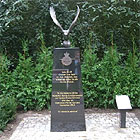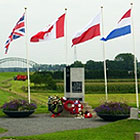Dutch Resistance - Arnhem |
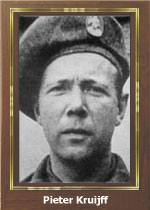
|
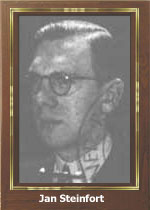
|
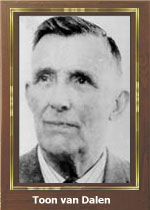
|
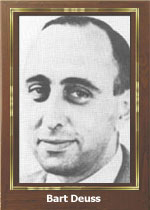
|
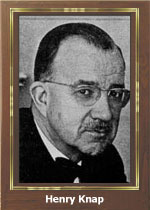
|
commander
KP Arnhem |
engineer
telephone exchange |
second
in command |
KP
Coordinator intelligence |
KP
Chief of intelligence |
It
is generally accepted that the Dutch Resistance in WW II was the best organized in Europe.
It had a cell structure. Each cell was called 'knokploeg' (KP). Arnhem KP was ready for
action and involved in intelligence and operational activities before the landings. The
Arnhem KP was known as one of the finest in the country, not only because of the trained
combat members but also the particularly well- educated technical personnel. These men and
woman had set up a network of secret telephone lines to the already liberated south of the
Netherlands and to other KP members throughout the country without using the public
telephone exchanges.
Another secret communication line was that of the PGEM
(Power Company). It had it's own non-public telephone network. This line ran along
the power cables and was used for communication between the electric stations throughout
the region. Being a private line unknown to the enemy, it was safe for use by the
Resistance. Before OMG the Arnhem KP sent many reports about the increasing number of
units and armour in the area. Detailed reports on strength, units, vehicles and commanders
were sent to England. These reports (as we know today) were backed up by British
intelligence, monitoring German radio traffic and, verifying the reports of the KP.
Arnhem KP received various orders to carry out sabotage
operations (destruction of infrastructure, but in such a way that this could be quickly
repaired for future use). Then something strange happened: simultaneously all 1st AB
forces received instructions before take off to IGNORE Dutch resistance because of
infiltration by the enemy. Prior to OMG, all telephone lines in the Arnhem region were
blocked by the Germans, except a few lines that were kept operational for Firemen, Doctors
and Policemen and of course the lines they needed themselves. The KP however maintained a
secret line between the main exchanges in the country.
When on ' Dolle Dinsdag' (Sept. 5th - mass
disorderly retreat of Germans from Holland) the security personnel (monitoring the
telephone lines) left for Germany, Arnhem KP made its move. Dutch operators
who were loyal to the KP now operate the telephone lines and the detonator to blow up the
exchange (under which explosive charges had been placed) was secured. The exchange was now
controlled by the KP. With full control of the exchange, the first thing the KP did was to
re-establish all safe telephone lines near 1st AB HQ at Hartenstein and the area around
the bridge. It is known that one line between a safe house near the bridge and a safe
house at Oosterbeek was used by the British, despite orders to IGNORE facilities offered
by the Dutch KP. |
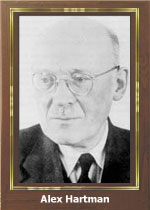
|
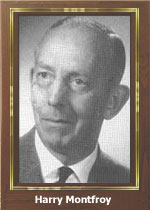
|
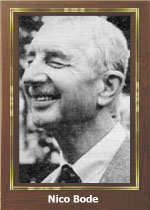
|

|
afbeelding
Prins Bernhard |
Engineer
at the PGEM |
KP
member |
KP
member |
Police
Officer |
|
From
Arnhem, Pieter Kruijf - commander of Arnhem KP - made contact several times with 1st
Airborne HQ at Oosterbeek (Hartenstein) and tried desperately to convince them to use the
available lines of communication, also providing them with various information about
German activities etc. However his assistance was ignored and he was told that everything
was under control. Meanwhile the Germans made full use of the telephone facilities in the
area! However telephone operators tried to sabotage the German communications (which
relied mainly on the telephone). This resulted in an important delay in the receipt of
operational orders during the first hours of the battle, as the Germans had to use
couriers on bikes to get the orders to their units.
When Arnhem KP contacted HQ at Hartenstein again to warn
them about the arrival of a new group of tanks at Arnhem which were proceeding to
Oosterbeek, orders were carried out by the Para's to blow up the telephone exchange at
Oosterbeek..... The tapping of lines (used by the Germans) at the Arnhem exchange provided
much important information. A message was intercepted stating that preparations had been
made to blow up the bridge. This information was immediately passed on to Frost's HQ. It
is said that a platoon under command of Lt. Barnett was able to remove the explosives,
although Lt. Barnett was killed during this action. Although very frustrated at the fact
that the important information that they were able to provide was beeing ignored, Arnhem
KP kept on trying to help. Via the secret telephone line and the PGEM line they
established contact with allied HQ and requested an air strike on the Dieren-Velp road
because of the advancing panzer group from Dieren to Arnhem. The request was ignored and
the connection was terminated. Whereas the commanders of the US 82nd en 101st Airborne
divisions ordered the immediate supply of ammunition and operational orders to the
Resistance groups in their areas, the only thing left for Arnhem KP was feeding the other
KP units in liberated territory with information about the battle. And sit and wait.......
The commander of the Dutch Resistance, HRH Prins Bernhard
of the Netherlands, based in liberated territory 100 miles away from Arnhem, knew exactly
what was happening in his country because of the detailed reports he received from Arnhem
KP. However Major-General Urquhart, commander of the forces in Arnhem and Oosterbeek and
located at his HQ at Oosterbeek, had to guess what was happening exactly with his
forces. The battle ended in the night of 25-26 Sept. when aprox. 2000 soldiers were
withdrawn over the Rhine in 'operation Berlin'. The next day orders were given for the
evacuation of the area. About 100.000 people had to leave their homes to seek shelter
elsewhere. Arnhem KP resumed its work where possible. Assistance was given to hide
hundreds of allied soldiers resulting in the Pegasus operations in which escaped and
evaded 1st Airborne para's along with American and British pilots and Resistance people
made their way back into liberated territory.
During the battle for the bridge, Police Officers J. van
Kuijk and Hogenboom spent most of their time in the Military Police station at
Eusebiusplein 21. It was partly due to their efforts that a telephone link was established
from this building to several other locations so that the forces at the bridge could make
contact with other units. |
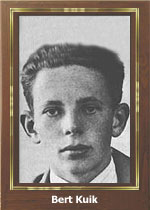
Bert Kuik: resistance worker
executed on November 3th 1944 |
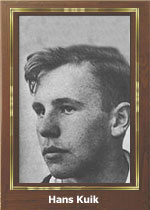
Hans Kuik: resistance worker
executed on November 3th 1944 |
| Bert (18) and Hans
(17) Kuik, the two brothers were couriers for the Resistance. Their daily routine was the
distribution of food and medicines to the locations where Jewish people or others were
hiding. They also delivered Resistance newspapers and gathered information that could be
useful for the Resistance. When the battle for Arnhem started the young brothers assisted
at the St Elisabeth Hospital. They helped with the transportation of the wounded and
burying of the dead, without complaint, doing everything in their power where possible.
Also they had an important roll in the escape of Brigadier Hackett from the Hospital and
the brothers escorted several escaped para's to the various hiding spots on the
"Veluwe". When on November 3rd the
Hospital was evacuated and all medical personnel were transported to Nunspeet, the two set
off on their own with some papers that could prove the involvement of the Red Cross in
providing assistance to the Resistance. They had also exchanged clothes with 2 para's to
make it possible for them to escape. On the way they were spotted in parts of a British
uniform, arrested and brought to "Golflinks" on Apeldoornseweg at Arnhem. At
this spot various people had been assembled for interrogation. The two brothers escaped
but were caught again.
They were immediately executed with a neck shot by Friedrich August Enkelstroth,
Untersturmfuhrer and Kriminalsekretar at the SD, on Friday 3rd of November 1944. After the
war Enkelstroth was convicted for the murder of 4 civilians and the torture of 12 known
others. He was sentenced to death (along with 152 others) but did only 12 years in prison. |
Dutch Commando's and volunteers at Arnhem |
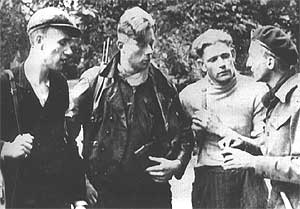 A party of 25 Dutch Commando's
from No.2 Dutch Troop (part of No 10 Inter Allied Commando) completed their training in
the Scottish Achnacarry in 1942. From 1943 they had been in action in the far east against
the Jappanese. A few weeks after returning to Europe they were told to stand by for
actions on the mainland of Europe. A party of 25 Dutch Commando's
from No.2 Dutch Troop (part of No 10 Inter Allied Commando) completed their training in
the Scottish Achnacarry in 1942. From 1943 they had been in action in the far east against
the Jappanese. A few weeks after returning to Europe they were told to stand by for
actions on the mainland of Europe.On
sunday the 17th of September the major part of the troop came in to action during
operation Market Garden. 11 commando's of the troop were assigned to the 82nd US Airborne
Division, 5 to the 101st US Airborne Division, 3 to the staff of 1st British Airborne
Corps and 12 commando's were assigned to the British 1st Airborne Division. 2 of them
crash landed in Gliders in the southern part of the Netherlands and 4 of them were taken
prisoner after landing. The names of the remaining party which came in to action at
Oosterbeek/Arnhem were: M.J. Knottenbelt, M. van Barneveld, A.H.T. Italiaander, A.J.P.
Beekmeier, C. Helleman, A. Wolters and M. Bakhuis-Roozeboom (killed).
During the battle Dutch volunteers were
recruted by Lieutenant-Commander Arnoldus Wolters and Lieutenant Maarten Knottenbelt, two
of the Dutch officers attached to the 1st Airborne Division. Only four of these recruits
were found to be members of Dutch resistance groups.
Three active Dutch volunteers photographed at
Hartenstein Oosterbeek on 19 September with Dutch Commando August M. Bakhuis-Roozeboom.
Bakhuis-Roozeboom would be killed on the same night while on a Jeep patrol to Arnhem with
two volunteers; Beekhuizen and Diepenveen, and was buried in the Hartenstein area. He was
reinterred in Oosterbeek as an unknown soldier from a Canadian regiment. His grave was
identified in 1996. The other 3 men on this photo have never been identified. It is said
one (left with cap) was a farmer from Elst or Driel who came to Oosterbeek with the Driel
ferry. Second left is believed to be a KP man from Arnhem, he came armed with a Russian
Machine Gun. |
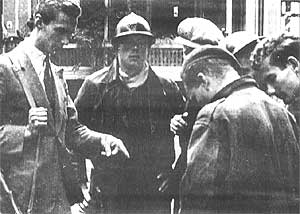 Dutch known to have served as
volunteers at Oosterbeek include Hielke van Tuinen, John Fernandes, Steven Meibergen, Jan
Eykelhoff, Wim Aalbers, Henk Beekhuizen, Anthonie Diepenveen, Douwe Faber, Gerrit van
Ginkel, Henk & Jaap Jansen, Henk & Wouter van de Kraats, Sjors Ruben, Jan &
Eef Vellinga, Gerrit Versteegh and Samuel Swarts (killed while bringing up supples by car
to the Tafelberg Hotel). Dutch known to have served as
volunteers at Oosterbeek include Hielke van Tuinen, John Fernandes, Steven Meibergen, Jan
Eykelhoff, Wim Aalbers, Henk Beekhuizen, Anthonie Diepenveen, Douwe Faber, Gerrit van
Ginkel, Henk & Jaap Jansen, Henk & Wouter van de Kraats, Sjors Ruben, Jan &
Eef Vellinga, Gerrit Versteegh and Samuel Swarts (killed while bringing up supples by car
to the Tafelberg Hotel).The group was led by Dutch
Commando Charles Douw van der Krap, a Dutch naval officer who had escaped from Colditz
prison (and had fought in the Warshaw uprising only a month previously before making his
way back to Holland) and came out of hiding to lead this group of aprox 25 to 30 men. They
were given orange armbands and armed with a few captured German rifles. They helped the
Dutch commandos to round up a few Nazi collaborators in the village, acted as guides, help
to collect supplies and dug slit trenches. On wednesday Wolters and van der Krap decided
that the situation was becoming too dangerous for the volunteers. If any of them was to
fall in German hands they almost certainly would be shot. Yet eight of them were asked to
infiltrate as civillians into Arnhem to gather intelligence on the German forces there but
all ways out were blocked and these plans came to nought.
Photo: from left to right: Hielke van Tuinen, Unknown KP
(with helmet), unknown farmer from Driel (with cap), the person to the right with only his
head visible is John Fernandes. The men are beeing instructed how to use a handgrenade.
van Tuinen, Fernandes and Steven Meibergen (not on the photos), all three students
living underground, ran into Major Montgomery and he talked them into serving as
translator. They were taken to Hartenstein when this photo was taken. When it became to
dangerous for them they were tranfered to the Tafelberg Hotel to help the wounded. When
they left to get fresh bread from the bakery, a German soldier opened the door at the
bakery and their service was over. |
Dutch resistance movement - general |
| British intelligence
warned 1st Airborne Division that the Dutch Underground Movement was not to be trusted and
they were not well organized. We allready know that the resistance group in the Arnhem
area was very well organized and had also high skilled intelligence workers which made
available a network of communications running throughout the entire country. Secret
telephone lines were setup amongst that one leading from Arnhem directly to allready
liberated parts in the south. It is not all that clear why the British were so sceptic
about the Dutch Underground Movement. There must have been a reason for that. Maybe the
'England Spiel' played a part in all this but, despite missions that went wrong because of
treason, other missions still went smoothly. In fact the Arnhem resistance did exactly
what was expected from them. Moreover it was the Dutch resistance who warned British
Intelligence about the presence of armoured vehicles in the area and even came up with the
names of the German units. In fact, British intelligence reports coming from monitoring
the German radio traffic allready had confirmed these reports. But no one linked these two
sources together. Even after the photo reconnaissance flights over the area which also
backed up the two other sources it was simply ignored. The officer ordering these flights
and bringing in the alarming results was send on sickleave. So one has to conclude that
the Dutch Underground Movement was operating like it should, was ready to support the
Airborne troops once they had landed, and the acusations were unfounded and simply untrue.
A good example to prove all this is, that the American Airborne Divisions ignored this
warning and made use of the very well organized Dutch resistance groups, which acted as
guides or gave valuable intelligence information and even took part in the fightings. A few days before Operation Market Garden was launched, several
S.A.S men were dropped in the Netherlands with special missions. These missions consisted
mostly of connecting to resistance groups and help them to organize as a fighting force.
One would expect that these S.A.S. men would not be sacrificed if there were strong
reasons to believe that the Dutch Underground Movement was not to be trusted. Ofcourse the
Dutch Double agent 'King Kong Lindemans' betrayed Operation Market Garden to the Germans,
but his information was not entirely complete and it was ignored by the Germans anyway.
There is absolutely no proof that the Germans undertook any kind of action because of this
information. Peter Berends who wrote a book about the German side of the operation (Een
andere kijk op de slag om Arnhem, 2002) does make one remark about this that could be of
any importance. He writes that he had found documents to prove ammunition transports
ordered to Arnhem by the SS on the day before the Operation started. But there is nothing
strange about that transport. The two Panzer units were there to rest, reorganize and
above all to be resupplied. It is more then logical that ammunition transports would be
coming in on a regular basis.
Having said all this one simply has to conclude that it
was avery serious mistake not to trust the Dutch Underground and make use of it, which had
direct consequences for the Operation regarding the operational theatre of the 1st
Airborne Division. Moreover it was 1st Airborne who destroyed, on purpose, most of the
communication lines of the resistance, leaving them with the devistating results after
they had withdrawn. In totall an estimated number of 9000 active Resistance People were
captured and executed, killed in fighting, or died on concentration camps. An estimatred
totall of another 9000 people fled the Netherlands during the occupation to serve as
secret agent or as soldier with the allied forces (Engelandvaarders) and were killed.
To honour the Dutch Underground Movement and to show that
many Dutch resistance workers were involved in all kinds of secret work against the German
occupation you will find a very small random selection of some of them who were not to
survive it. Remember them. |
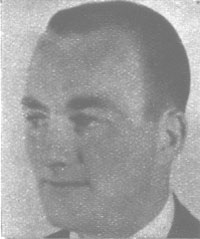
|
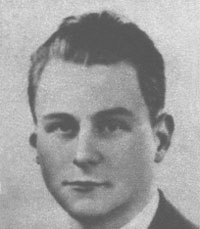
|
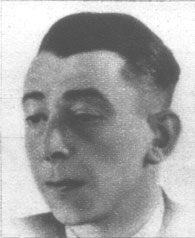
|
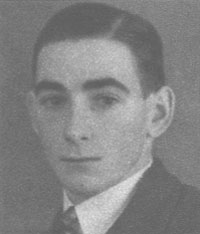
|
Adriaan Nachtegaal
L.K.P.
executed 10-01-1945 |
Auke Zeilstra (22)
L.K.P.
executed 10-10-1944 |
A. van Beek (39)
jewish refugees
executed 29-03-1944 |
A. van Velsen (23)
B.V.G / N.B.S.
executed 13-04-1945 |
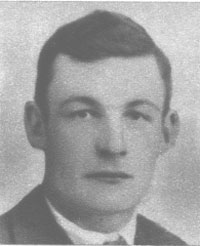 |
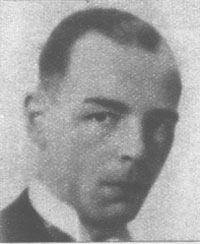 |
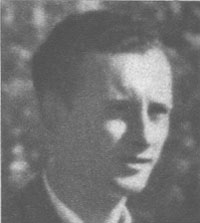 |
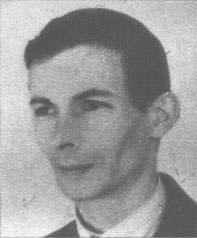 |
B.J.A. Huijgen (38)
L.O. / Hiding Transmitter
executed 12-04-1945 |
Johan C. Miebies (30)
L.K.P. / B.V.G.
executed 13-04-1945 |
D.H. Wijma (27)
Cell Narda
executed 02-10-1944 |
Dirk Johan Beumer (29)
Underground Press
executed 04-09-1944 |
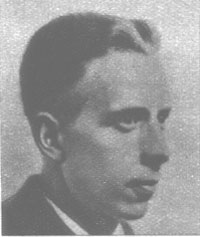 |
 |
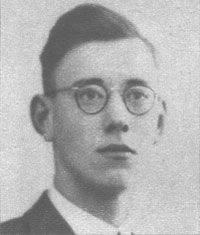 |
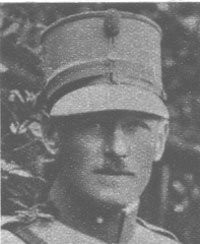 |
Dirk Lammes (43)
L.O /Propaganda
executed 08-03-1945 |
Gerrit W. Kleisen (26)
L.K.P.
executed 06-06-1944 |
G.F. Hooyer (20)
Secret Agent
executed 12-03-1945 |
H.A.J. Sneijers (55)
L.O.
camp Buchenwald 01-04-1943 |
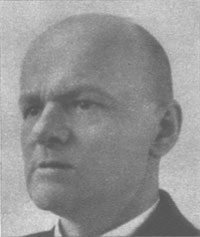 |
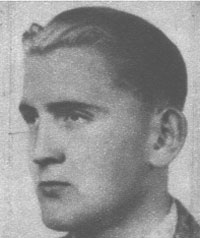 |
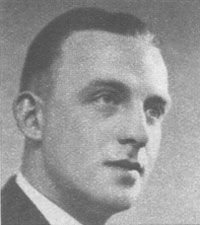 |
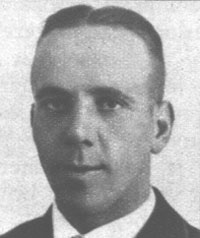 |
H.C. Edauw (52)
B.V.G.
executed 08-03-1945 |
Henk Verkuyl (22)
L.K.P.
executed 15-12-1944 |
H. Klein (29)
Cell unknown
executed 09-08-1944 |
H. van de Brink (43)
Cell unknown
executed 08-03-1945 |
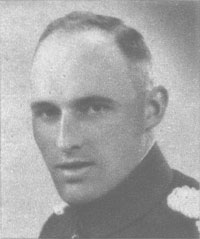 |
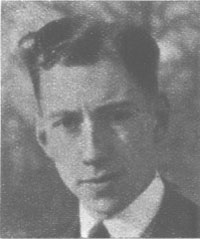 |
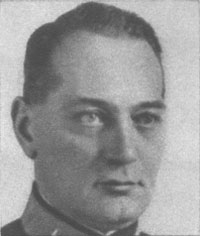 |
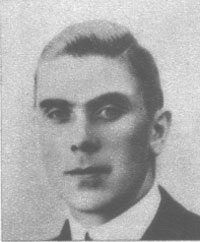 |
Jan Schut (26)
L.K.P.
executed 02-10-1944 |
Jan Willem H. Penning (26)
Underground Press
executed 10-08-1944 |
J. Barendsen (61)
O.D.
executed 02-10-1944 |
J.C. Endeveld (27)
Sabotage/Underground Press
executed 16-10-1942 |
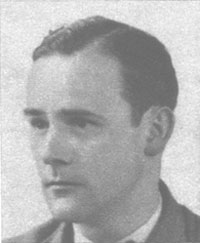 |
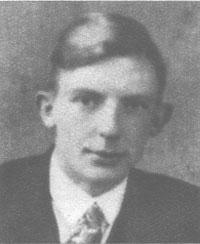 |
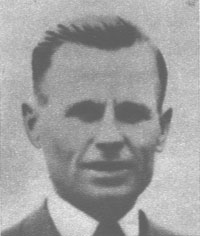 |
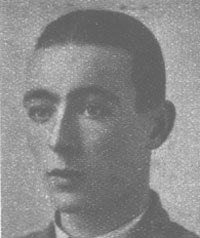 |
J.F. de Jong (44)
B.V.G.
executed january 1944 |
J.R. Gosker (36)
L.O. /pilots
executed 12-04-1945 |
J. Scherpenzeel (40)
L.O. - B.V.G.
executed 12-04-1945 |
Carel Pruis (22)
L.K.P.
executed 15-03-1945 |
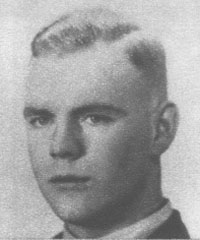 |
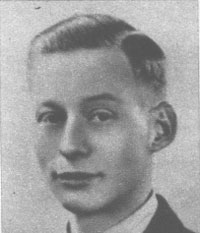 |
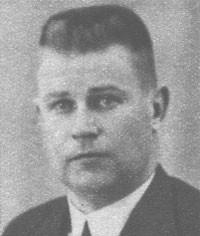 |
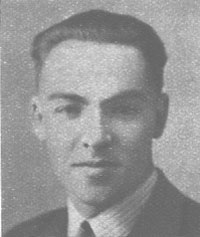 |
K.H. Ketel
(21)
L.K.P.
executed 04-11-1944 |
K.
Zeilstra (21)
L.K.P
executed 10-10-1944 |
Lambertus
Kremer (44)
L.O. / jewish refugees
executed 08-03-1945 |
Reinder
Mulder (34)
L.O.-K.P.-B.V.G.
executed 12-04-1945 |
 |
 |
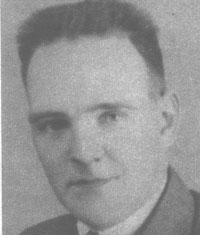 |
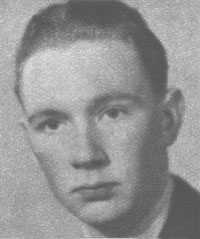 |
Reinier van Gerrevink (37)
L.O. /pilots /intelligence
executed 02-10-1944 |
Seerp Postma (24)
L.K.P.
executed 02-12-1944 |
Theodore Westhoff (40)
L.O. /hiding of weapons
executed 09-11-1944 |
T.J. Kroeze (24)
Cell unknown
executed 02-12-1944 |
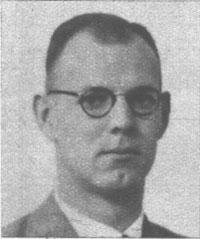 |
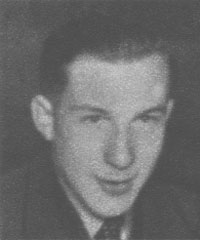 |
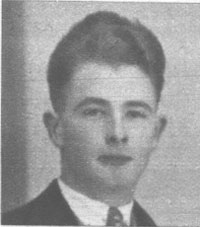 |
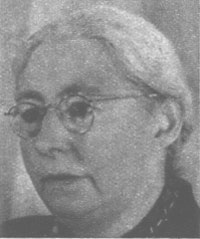 |
Willem. J. Aalders (30)
Cell Narda (sabotage/hiding pilots)
executed 02-10-1944 |
Willem Karreman (28)
Cell Narda
executed 02-10-1944 |
M. Lubberts
O.D. / L.O. /L.K.P.
missing |
J.C. Bitter v.d. Noorda (66)
O.D. / pilots
camp Ravensbruck 6-1-1945 |
| abreviations |
K.P.
(Knok Ploeg) - Cell of active resistance workers.
activities: armed actions mainly on prisons and distribution centers and
if needed other armed activities. |
L.K.P.
(Landelijk Verbond der Knokploegen) - National Allied Resistance Groups, Head Quarters at
Rotterdam.
activities: droppings, weapon transports, executions, sabotage,
intelligence, transport of pilots back to liberated territory. |
L.O.
(Landelijke Organisatie tot hulp aan onderduikers) - National Organistation for hiding
refugees. Working closely together with the L.K.P.
activities: providing hiding spots, food, transport etc. for refugees. |
B.V.G.
(Burger Verzets Groep (ongewapend) - Civilian Resistance Group (unarmed)
activities: small sabotage activities of all kind. |
O.D.
(Orde Dienst) - Security Group
activities: resistance group mostly formed by former soldiers, primarely
formed to act as peace keepers after the war. |
Pilots /
Jews (Piloten en Joden)
activities: Hiding Allied Pilots or Jewish Refugees. |
| note:
besides these organisations there were hundreds of small groups or cells that acted on
their own, we define them as cell/name. |
related multimedia coverage |
|

  |




